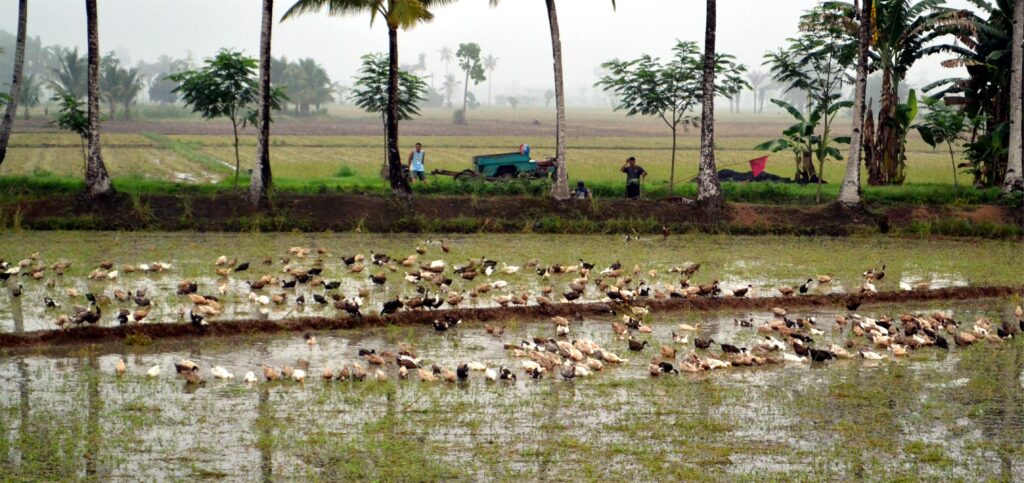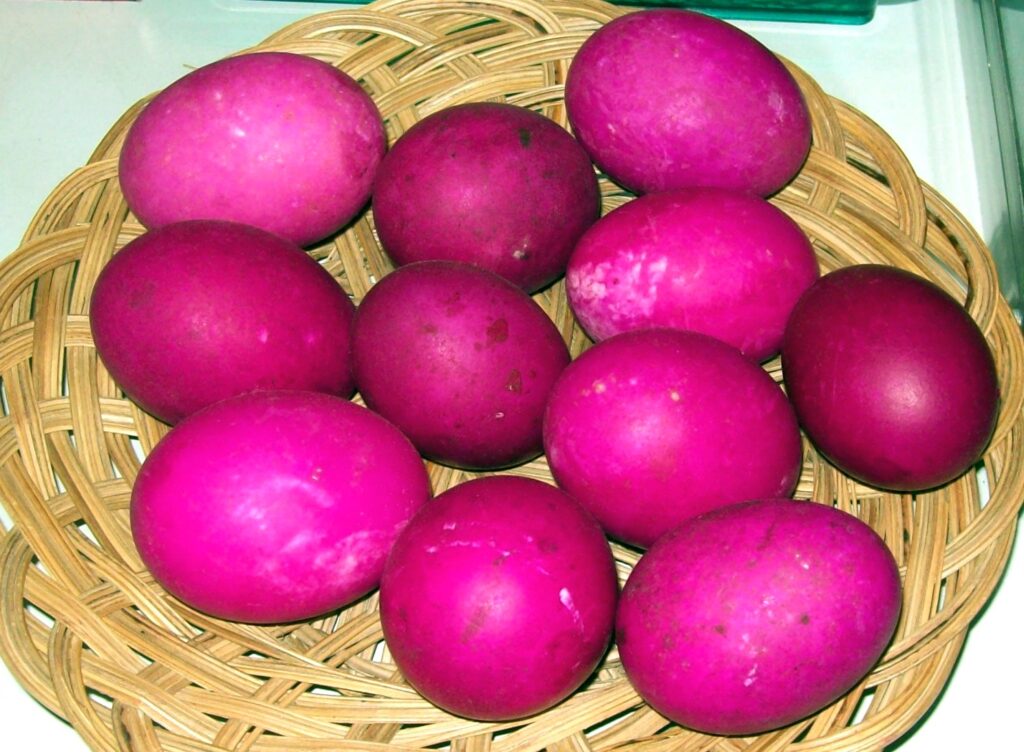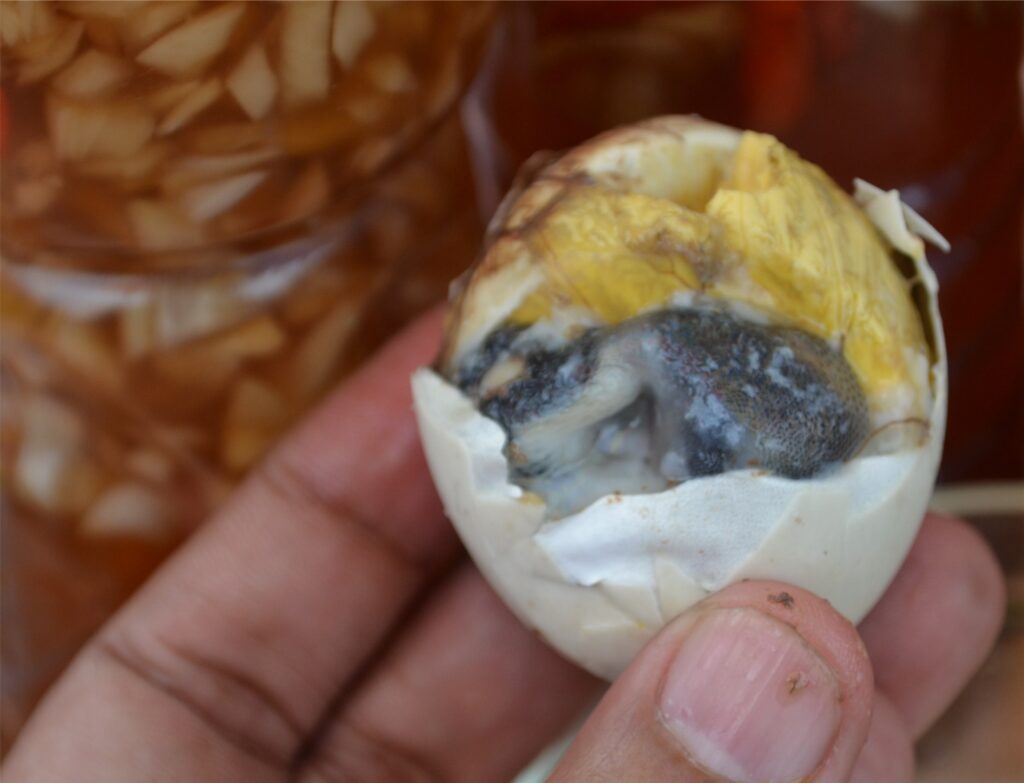Text and Photos by Henrylito D. Tacio
Duck raising is an old industry in the Philippines. It has been in the country for so long that nobody can say definitely when it started. The early Chinese traders supposedly introduced duck raising into the country, and when the Spaniards settled in Manila, they found it already a thriving business in – where else? – Pateros (the Spaniards always referred to its inhabitants as pateros, which means “duck raisers”).
Today, ducks are raised anywhere in the country. Although it ranks second only to chicken for egg and meat production, duck is also an important sub-sector of the Philippine poultry industry. It provides employment and income-generating opportunities for Filipinos, particularly those in the rural and marginal areas.
Unknowingly, duck production is one of the most profitable livestock industries in the country, mainly because of its egg. There are different species of ducks that are raised for egg production. Most farmers have a hard time determining which of these species are applicable in their farms.
Due to this problem, Filipino agricultural scientists did continuous selection and breeding of the traditional Pateros duck. In a project conducted by the Philippine Council for Agriculture, Aquatic and Natural Resources Research and Development (PCAARRD) and the National Swine and Poultry Research and Development Center (NSPRDC), a genetically superior breed duck called itik Pinas (IP) was developed.
IP has three strains: two of which are pure lines known as IP-Itim (black strain) and IP-Khaki (Campbell strain) and one commercial hybrid line, IP-Kayumanggi (brown strain).
The IP-Itim ducks have the following production characteristics: begin laying eggs at the age of 23 weeks; production peaks at the age of 29 weeks; have a peak production of 99%; produce about 256 eggs per year; consume about 12.8 kilograms of feed between day one and 18 weeks of age, and daily feed intake is 142 grams during their laying period.
On the other hand, the IP-Khaki ducks have the following production characteristics: begin laying eggs at the age of 22 weeks; production peaks at the age of 29 weeks; have a peak production of 98%; produce about 256 eggs per year; consume about 12.5 kilograms of feed between day one and 18 weeks of age, and daily feed intake is 149 grams during their laying period.

Raising ducks
Meanwhile, the IP-Kayumanggi ducks have the following production characteristics: start laying eggs at the age of 20 weeks; production peaks at the age of 29 weeks; have a peak production of 98%; produce about 266 eggs per year; consume about 12.5 kilograms of feed between day one and 18 weeks of age, and daily feed intake is 140 grams during their laying period.
Unfortunately, duck eggs are not popular compared with chicken eggs. The reason: duck eggs have this fishy odor and flavor, which most Filipinos don’t like at all.
Most duck eggs end up being processed into two major Filipino delicacies: balut (a fertilized egg with a nearly developed embryo inside that is boiled and eaten in the shell) and salted egg (itlog na maalat).
It might be unacceptable to most foreigners, but for Filipinos, balut is one of the country’s most treasured delicacies. In fact, making balut is native to the Philippines. A similar preparation is known in China as maodan (literally “feathered egg”). Chinese traders and migrants are said to have brought the idea of eating fertilized duck eggs back from the Philippines.
However, the knowledge and craft of balut-making have been localized by the balut-makers (locally known as magbabalut). Today, balut production has not been mechanized in favor of traditional production by hand.
Named after the Filipino term which means “wrapped,” balut has been touted as an aphrodisiac as it boosts libido. Studies have shown balut contains 12.6 grams of protein, 181 calories, and good sources of Vitamin B1 and B2, minerals, niacin, beta carotene, and other supplements.
Balut is common on street drinking sessions and just chatting with friends late at night. Generally, balut is being sold mostly when the street lights are on by vendors in baskets covered with thick foams and cloths to keep them warm.
Generally, balut is eaten with a pinch of salt, though some balut-eaters prefer chili and vinegar to complement their egg. The egg is savored for its balance of texture and flavor; the broth surrounding the embryo is sipped from the egg before the shell is peeled, and the yolk and young chick inside can be eaten. All of the contents of the egg are consumed.
“This food is the defining factor of all exotic foods in the country,” one foreigner commented. “It has made the Philippines unique from all of the countries in the world. Hopefully, in the future, the world will be ready for it and that the Philippines will make it an international phenomenon.”
Balut has been the “shocking” topic of some television shows because of its taboo nature in some Western cultures. In two episodes of Survivor: Palau and two episodes of Survivor: China, separate challenges featured attempts to eat this fertilized egg. Similarly, Fear Factor frequently uses balut as a means of disgusting contestants. The Ultimate Fighter: Team Nogueira vs. Team Mir featured balut eaten by several contestants after its introduction by a Filipino-American fighter Phillipe Nover.
Recently, balut has entered higher cuisine in the Philippines by being served as appetizers in restaurants: cooked adobo style, fried in omelets, or even used as filling in baked pastries.

Salted eggs 
Balut
Like balut, salted egg (itlog na maalat) is now well accepted by Filipino consumers. In fact, it is a common feature in Filipino dining tables, especially during breakfast. It can be eaten along with steamed rice or mixed in salad style with diced tomatoes and onions.
Salted egg is also used as an ingredient in pastries and toppings on breads and other bakery products, especially bibingka. In China (where it is eaten with congee), the yolk of salted egg is highly prized as it is used in mooncakes to symbolize the moon.
The shelf life of salted eggs can now be extended by using the cassava starch-potassium sorbate coating developed by the University of the Philippines at Los Baños (UPLB) in tandem with PCAARRD.
“Application of coating is considered a practical method in extending the shelf life of salted duck eggs stored at ambient temperature from 5 to 12 weeks,” PCAARRD, a line agency of the Department of Science and Technology (DOST), said in a briefer.
The coating is composed of cassava starch (4-6%), glycerol (1-3%), potassium sorbate (0.3-0.5%), and water (90-95%). Apply this coating to boiled salted eggs through soaking and drying (using a 50+3⁰C cabinet dryer) for two hours.
Aside from extending the shelf life of salted duck eggs, the technique also prevents moisture loss and microbial contamination and improves sensory characteristics.
What’s in a salted egg? Nutritionists say it is packed with nutrients. Compared to fresh egg, balut, or century egg, salted egg is highest in calcium (120 milligrams), carbohydrates (4.4 milligrams), ash (202 milligrams), and thiamin (0.74 milligrams).
So popular is the salted egg that Filipinos who are now living or working abroad are looking for it. A study conducted by Dr. Jovita M. Datuin of the Don Mariano Marcos State University showed the Philippines is already exporting processed duck products, including salted eggs, to Kuwait, Arabia, Peninsula, Bahrain, and even the Trust Territory in the Pacific Islands.

